The endless space that surrounds us is not just a huge airless space and emptiness. Here everything is subject to a unified and strict order, everything has its own rules and obeys the laws of physics. Everything is in constant motion and is constantly interconnected with each other. It is a system in which every celestial body takes its specific place. The center of the universe is surrounded by galaxies, among which is our Milky Way. Our galaxy, in turn, is formed by stars, around which large and small planets rotate with their natural satellites. Wandering objects - comets and asteroids - complete the picture of the universal scale.
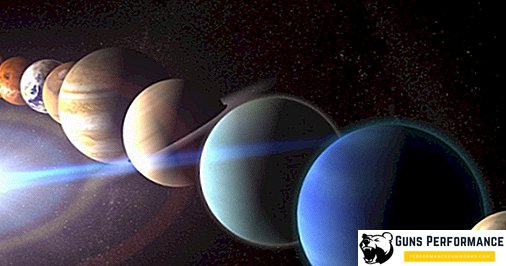
In this endless cluster of stars is our solar system - a tiny astrophysical object by cosmic standards, to which our cosmic home belongs - the planet Earth. For us earthlings, the size of the solar system is colossal and difficult to perceive. From the point of view of the scale of the Universe, these are tiny figures - just 180 astronomical units or 2,693e + 10 km. Here, too, everything is subject to its laws, has its clearly defined place and sequence.
Brief description and description
The interstellar medium and the stability of the solar system provides the location of the sun. Its location is an interstellar cloud entering the Orion-Cygnus arm, which in turn is part of our galaxy. From a scientific point of view, our Sun is on the periphery, 25 thousand light years from the center of the Milky Way, if we consider the galaxy in the center plane. In turn, the movement of the solar system around the center of our galaxy is carried out in orbit. The full rotation of the Sun around the center of the Milky Way is carried out in different ways, within 225-250 million years and is one galactic year. The solar system's orbit has a 600-degree galactic plane. Next to it, our stars and other solar systems with their large and small planets run around the center of the galaxy.
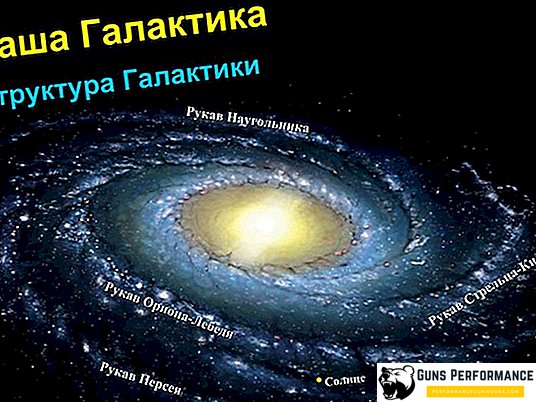
The approximate age of the solar system is 4.5 billion years. Like most objects in the universe, our star was formed as a result of the Big Bang. The origin of the solar system is explained by the action of the same laws that were in force and continue to operate today in the field of nuclear physics, thermodynamics and mechanics. At first, a star was formed, around which the formation of planets began due to the ongoing centripetal and centrifugal processes. The sun was formed from a dense accumulation of gases - a molecular cloud that became the product of a colossal explosion. As a result of centripetal processes, the molecules of hydrogen, helium, oxygen, carbon, nitrogen and other elements were compressed into one continuous and dense mass.
The result of the grandiose and large-scale processes was the formation of a protostar, in the structure of which thermonuclear fusion began. This long process, which began much earlier, we observe today, looking at our Sun after 4.5 billion years from the moment of its formation. The scale of the processes occurring during the formation of a star can be represented by estimating the density, size and mass of our Sun:
- density is 1,409 g / cm3;
- the volume of the Sun is almost the same figure - 1.40927х1027 m3;
- the mass of the star is 1.9885х1030 kg.

Today, our Sun is an ordinary astrophysical object in the Universe, not the smallest star in our galaxy, but far from the largest. The sun dwells in its mature age, being not only the center of the solar system, but also the main factor in the emergence and existence of life on our planet.
The final structure of the solar system falls on the same period, with a difference of plus or minus half a billion years. The mass of the entire system, where the sun interacts with other celestial bodies of the solar system, is 1.0014 M☉. In other words, all the planets, satellites and asteroids, cosmic dust and particles of gases revolving around the Sun, in comparison with the mass of our star, are a drop in the sea.
In the form in which we have an idea about our star and planets orbiting the sun - this is a simplified version. For the first time, the mechanical heliocentric model of the solar system with a clockwork mechanism was presented to the scientific community in 1704. It should be noted that the orbits of the planets of the solar system do not lie all in the same plane. They rotate around at a certain angle.
The model of the Solar system was created on the basis of a simpler and more ancient mechanism - tellurium, with the help of which the position and movement of the Earth relative to the Sun was modeled. With the help of tellurium, it was possible to explain the principle of the movement of our planet around the Sun, to calculate the duration of the Earth year.
The simplest model of the solar system is presented in school textbooks, where each of the planets and other celestial bodies occupy a specific place. It should be borne in mind that the orbits of all objects revolving around the sun are located at a different angle to the diametrical plane of the solar system. The planets of the Solar System are located at different distances from the Sun, make a revolution at different speeds and turn around their own axis in different ways.
A map — a diagram of the solar system — is a drawing where all objects are located in one plane. In this case, such an image gives an idea only about the size of celestial bodies and the distances between them. Thanks to this interpretation, it became possible to understand the location of our planet among other planets, to estimate the scale of celestial bodies and to give an idea of the enormous distances that separate us from our celestial neighbors.
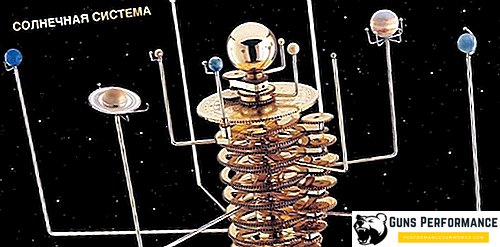
Planets and other objects of the solar system
Virtually the entire universe is a myriad of stars, among which are large and small solar systems. The fact that a star has its own satellite planets is a commonplace phenomenon for space. The laws of physics are the same everywhere and our solar system is no exception.
If you ask yourself how many planets in the solar system were and how many are today, it is definitely quite difficult to answer. The exact location of 8 major planets is now known. In addition, around the Sun revolve 5 small dwarf planets. The existence of the ninth planet at the moment in scientific circles is disputed.

The entire solar system is divided into groups of planets, which are arranged in the following order:
Earth Group Planets:
- Mercury;
- Venus;
- Land;
- Mars.
Gas planets are giants:
- Jupiter;
- Saturn;
- Uranus;
- Neptune.
All the planets in the list differ in structure, have different astrophysical parameters. Which planet is bigger or smaller than others? The dimensions of the planets of the solar system are different. The first four objects, similar in structure to the Earth, have a solid stone surface, endowed with an atmosphere. Mercury, Venus and Earth are inner planets. Mars closes this group. Behind him are the gas giants: Jupiter, Saturn, Uranus and Neptune - dense, spherical gas formations.
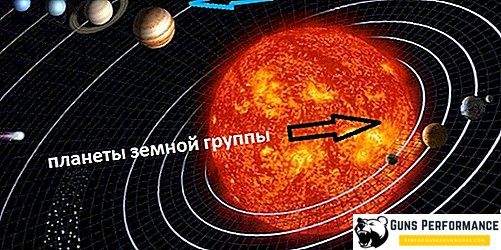
The process of life of the planets of the solar system does not stop for a second. Those planets that we see in the sky today are the disposition of the celestial bodies that the planetary system of our star has at the current moment. The state that was at the dawn of the formation of the solar system is very different from what has been studied today.
The table shows the astrophysical parameters of modern planets, where the distance between the planets of the Solar system and the Sun is also indicated.

The existing planets of the solar system are about the same age, however there are theories that at first there were more planets. This is evidenced by numerous ancient myths and legends describing the presence of other astrophysical objects and catastrophes that led to the destruction of the planet. This is confirmed by the structure of our star system, where, along with the planets, there are objects that are products of violent cosmic cataclysms.
A striking example of such activity is the asteroid belt, located between the orbits of Mars and Jupiter. Here are concentrated in a huge number of objects of extraterrestrial origin, mainly represented by asteroids and small planets. It is these debris of irregular shape in human culture that are considered remnants of the protoplanet Phaeton, which died billions of years ago as a result of a massive cataclysm.
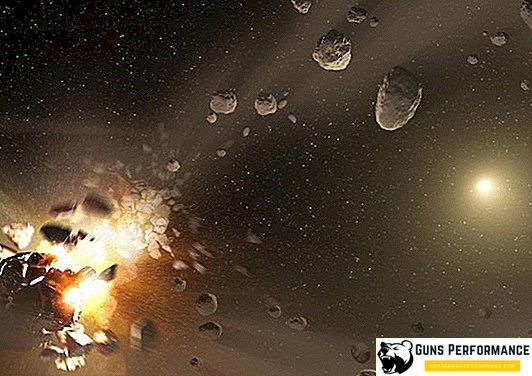
In fact, in scientific circles there is an opinion that the asteroid belt was formed as a result of the destruction of the comet. Astronomers discovered the presence of water on the large asteroid Themis and on the minor planets Ceres and Vesta, which are the largest objects of the asteroid belt. The ice found on the surface of asteroids may indicate the cometary nature of the formation of these cosmic bodies.
Earlier, referring to the large planets Pluto, today is not considered a full-fledged planet.
Pluto, previously numbered among the major planets of the solar system, is today converted to the size of dwarf celestial bodies orbiting the sun. Pluto, along with Haumea and Makemake, the largest dwarf planets, is located in the Kuiper belt.
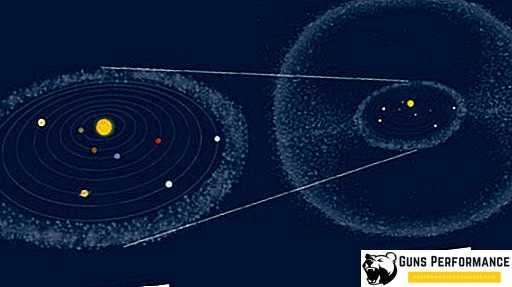
These dwarf planets of the solar system are located in the Kuiper belt. The region between the Kuiper belt and the Oort cloud is the most distant from the Sun, but even there outer space is not empty. In 2005, they discovered the most distant celestial body of our solar system - the dwarf planet Eridu. The process of exploring the most remote areas of our solar system continues. The Kuiper belt and the Oort cloud, hypothetically, are the border areas of our star system, the visible border. This cloud of gas is located at the distance of one light year from the Sun and is the area where comets are born, the traveling satellites of our star.
Characteristics of the Solar System Planets
The terrestrial group of planets is represented by the planets closest to the Sun - Mercury and Venus. These two cosmic bodies of the Solar System, despite their similarity in physical structure with our planet, are a hostile environment for us. Mercury is the smallest planet of our star system, closest to the Sun. The heat of our star literally incinerates the surface of the planet, practically destroying the atmosphere on it. The distance from the surface of the planet to the Sun is 57,910,000 km. In size, only 5 thousand kilometers in diameter, Mercury is inferior to most of the large satellites dominated by Jupiter and Saturn.
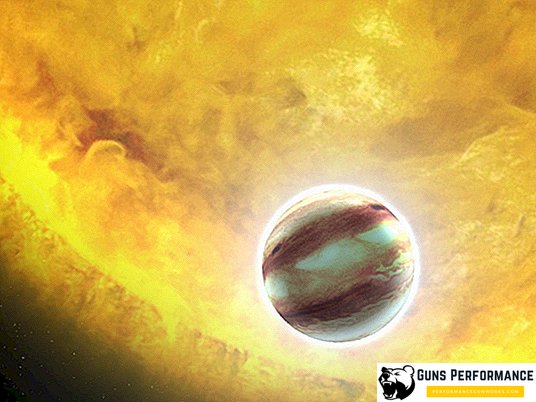
Saturn's satellite Titan has a diameter of over 5 thousand km, the satellite of Jupiter Ganymede has a diameter of 5265 km. Both satellites are only smaller than Mars in size.
The very first planet rushes around our star at a tremendous speed, making a complete revolution around our star in 88 Earth days. To notice this small and nimble planet in the starry sky is almost impossible due to the near presence of the solar disk. Among the terrestrial planets, it is on Mercury that the largest daily temperature drops are observed. While the surface of the planet facing the Sun heats up to 700 degrees Celsius, the reverse side of the planet is immersed in universal cold with temperatures down to -200 degrees.
The main difference of Mercury from all the planets of the Solar system is its internal structure. Mercury has the largest iron-nickel inner core, which accounts for 83% of the mass of the entire planet. However, even the uncharacteristic quality did not allow Mercury to have its own natural satellites.
Behind Mercury is the nearest planet to us - Venus. The distance from Earth to Venus is 38 million km, and it is very similar to our Earth. The planet has almost the same diameter and mass, a little inferior in these parameters to our planet. However, in all other respects, our neighbor is radically different from our cosmic home. The period of the revolution of Venus around the Sun is 116 Earth days, and around its own axis, the planet rotates extremely slowly. The average temperature of the surface of Venus rotating around its axis for 224 Earth days is 447 degrees Celsius.

Like its predecessor, Venus is devoid of physical conditions conducive to the existence of known life forms. The planet is surrounded by a dense atmosphere, consisting mainly of carbon dioxide and nitrogen. Both Mercury and Venus are the only planets in the solar system that are devoid of natural satellites.
Earth is the last of the inner planets of the solar system, being from the Sun approximately at a distance of 150 million km. Our planet makes one revolution around the Sun in 365 days. Rotates around its own axis in 23.94 hours. The Earth is the first of the celestial bodies, located on the way from the Sun to the periphery, which has a natural satellite.
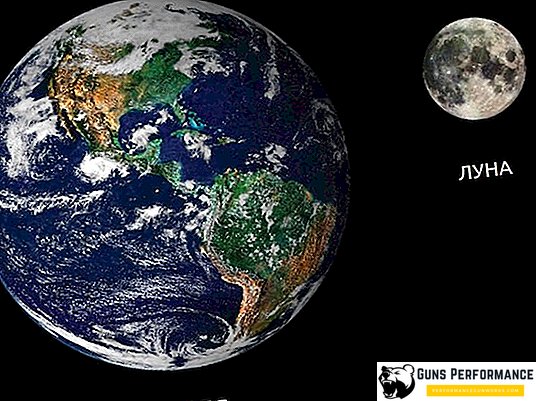
Retreat: Astrophysical parameters of our planet are well studied and known. Earth is the largest and densest planet of all the other inner planets of the solar system. It is here that preserved the natural physical conditions under which the existence of water is possible. Our planet has a stable magnetic field that holds the atmosphere. Earth is the most well-studied planet. The subsequent study is mainly not only of theoretical interest, but also practical.
Closes the parade of the planets of the Earth group Mars. The subsequent study of this planet is mainly not only of theoretical interest, but also practical, associated with the development of man of extraterrestrial worlds. Astrophysicists are attracted not only by the relative proximity of this planet to the Earth (an average of 225 million km), but also by the absence of difficult climatic conditions. The planet is surrounded by the atmosphere, though in a very rarefied state, has its own magnetic field and temperature differences on the surface of Mars are not as critical as on Mercury and on Venus.
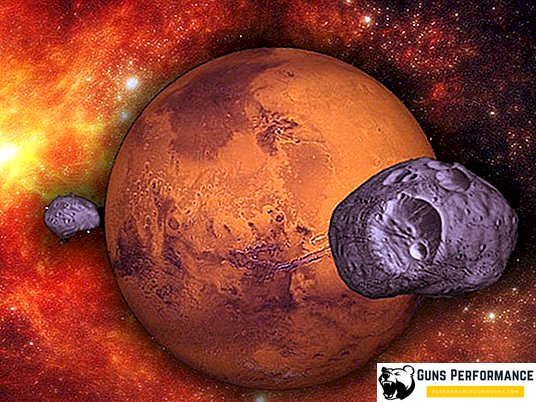
Like Earth, Mars has two satellites, Phobos and Deimos, whose natural nature has recently been questioned. Mars is the last fourth planet with a solid surface in the solar system. Following the asteroid belt, which is a kind of inner boundary of the solar system, the realm of gas giants begins.
The largest cosmic celestial bodies of our solar system
The second group of planets that make up the system of our star has bright and large representatives. These are the largest objects of our solar system, which are considered as external planets. Jupiter, Saturn, Uranus and Neptune are the most distant from our star, their astrophysical parameters are huge by earthly standards. These celestial bodies differ in their massiveness and composition, which mainly has a gas nature.

The main beauties of the solar system are Jupiter and Saturn. The total mass of this pair of giants would be enough to accommodate the mass of all the known celestial bodies of the solar system. So Jupiter - the largest planet of the solar system - weighs 1876.64328 · 1024 kg, and the mass of Saturn is 561.80376 · 1024 kg. These planets have the most natural satellites. Some of them, Titan, Ganymede, Callisto and Io are the largest satellites of the Solar system and are comparable in size with the terrestrial planets.
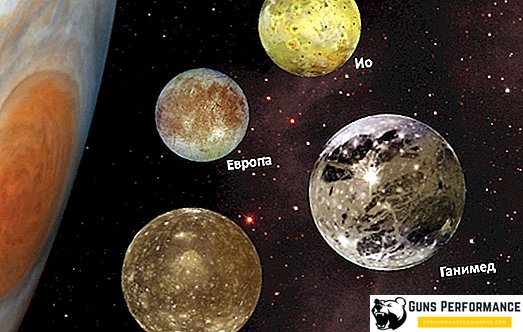
The largest planet of the solar system - Jupiter - has a diameter of 140 thousand km. In many ways, Jupiter is more like a failed star - a vivid example of the existence of a small solar system. This is indicated by the size of the planet and astrophysical parameters - Jupiter is only 10 times smaller than our star. The planet rotates around its own axis fairly quickly - only 10 Earth hours. The number of satellites, of which 67 pieces have been identified to date, is also striking. The behavior of Jupiter and his satellites is very similar to the model of the solar system. This number of natural satellites from one planet poses a new question, how many planets of the solar system were at an early stage of its formation. It is assumed that Jupiter, having a powerful magnetic field, turned some of the planets into their natural satellites. Some of them - Titan, Ganymede, Callisto and Io - the largest satellites of the solar system and are comparable in size with the terrestrial planets.
His younger brother, the gas giant Saturn, is slightly inferior in size to Jupiter. This planet, like Jupiter, consists mainly of hydrogen and helium - gases, which are the basis of our star. При своих размерах, диаметр планеты составляет 57 тыс. км, Сатурн также напоминает протозвезду, которая остановилась в своем развитии. Количество спутников у Сатурна немногим уступает количеству спутников Юпитера - 62 против 67. На спутнике Сатурна Титане, так же как и на Ио - спутнике Юпитера - имеется атмосфера.

Другими словами, самые крупные планеты Юпитер и Сатурн со своими системами естественных спутников сильно напоминают малые солнечные системы, со своим четко выраженным центром и системой движения небесных тел.
За двумя газовыми гигантами идут холодные и темные миры, планеты Уран и Нептун. Эти небесные тела находятся на удалении 2,8 млрд. км и 4,49 млрд. км. от Солнца соответственно. В силу огромной удаленности от нашей планеты, Уран и Нептун были открыты сравнительно недавно. В отличие от двух других газовых гигантов, на Уране и Нептуне присутствует в большом количестве замерзшие газы - водород, аммиак и метан. Эти две планеты еще называют ледяными гигантами. Уран меньше по размерам, чем Юпитер и Сатурн и занимает третье место в Солнечной системе. Планета представляет собой полюс холода нашей звездной системы. На поверхности Урана зафиксирована средняя температура -224 градусов Цельсия. От других небесных тел, вращающихся вокруг Солнца, Уран отличается сильным наклоном собственной оси. Планета словно катится, вращаясь вокруг нашей звезды.
Как и Сатурн, Уран окружает водородно-гелиевая атмосфера. Нептун в отличие от Урана, имеет другой состав. О присутствии в атмосфере метана говорит синий цвет спектра планеты.
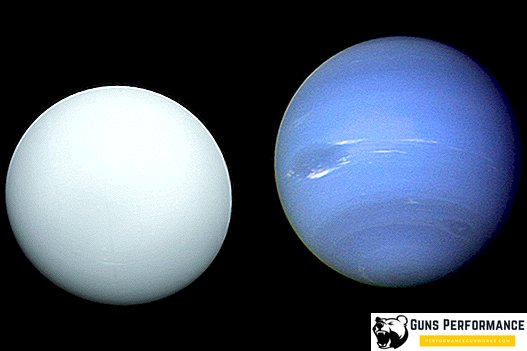
Обе планеты медленно и величаво двигаются вокруг нашего светила. Уран оборачивается вокруг Солнца за 84 земных лет, а Нептун оббегает вокруг нашей звезды вдвое дольше - 164 земных года.
В заключение
Наша Солнечная система представляет собой огромный механизм, в котором каждая планета, все спутники Солнечной системы, астероиды и другие небесные тела двигаются по четко уставленному маршруту. Здесь действуют законы астрофизики, которые не меняются вот уже 4,5 млрд. лет. По внешним краям нашей Солнечной системы двигаются в поясе Койпера карликовые планеты. Частыми гостями нашей звездной системы являются кометы. Эти космические объекты с периодичностью 20-150 лет посещают внутренние области Солнечной системы, пролетая в зоне видимости от нашей планеты.












